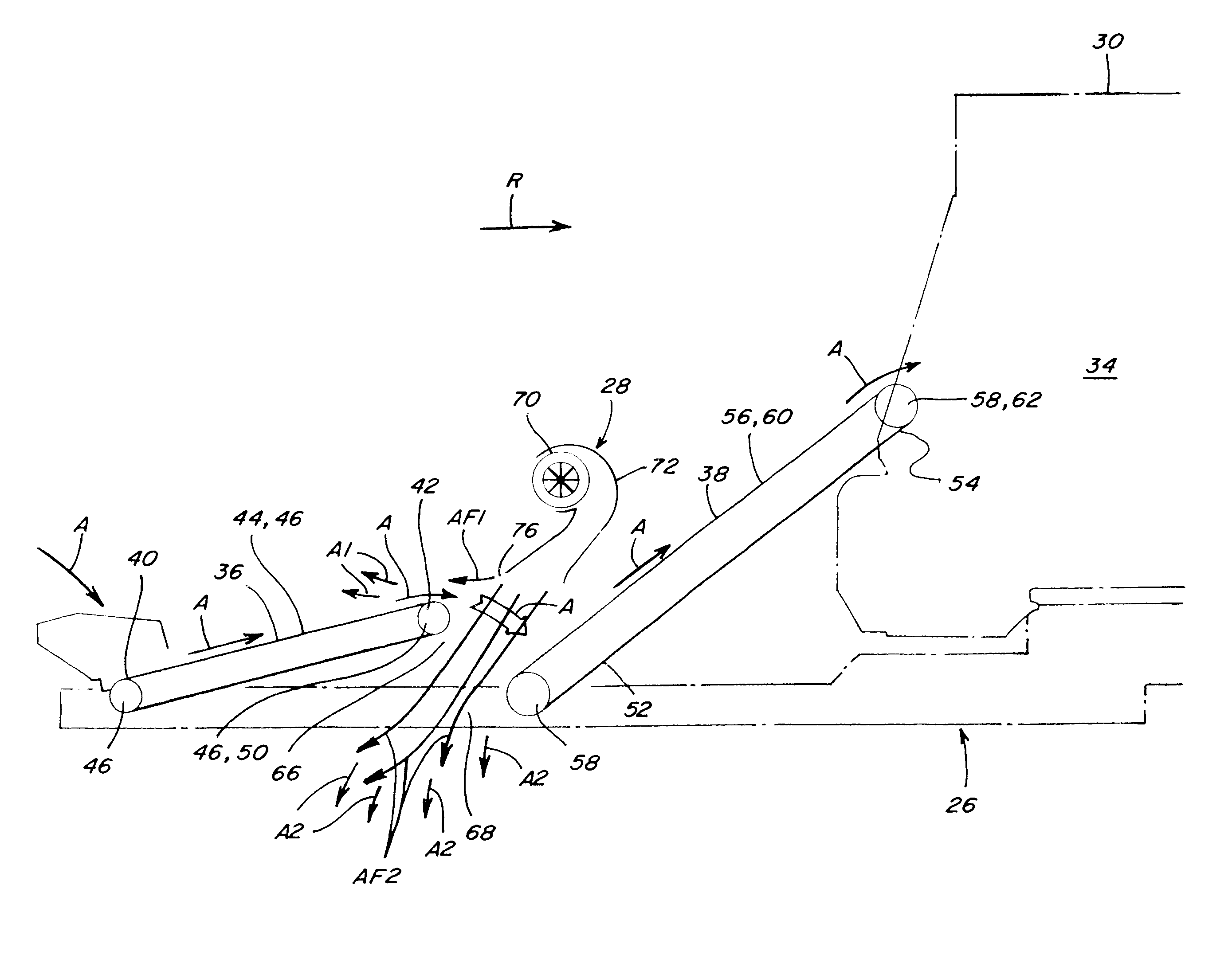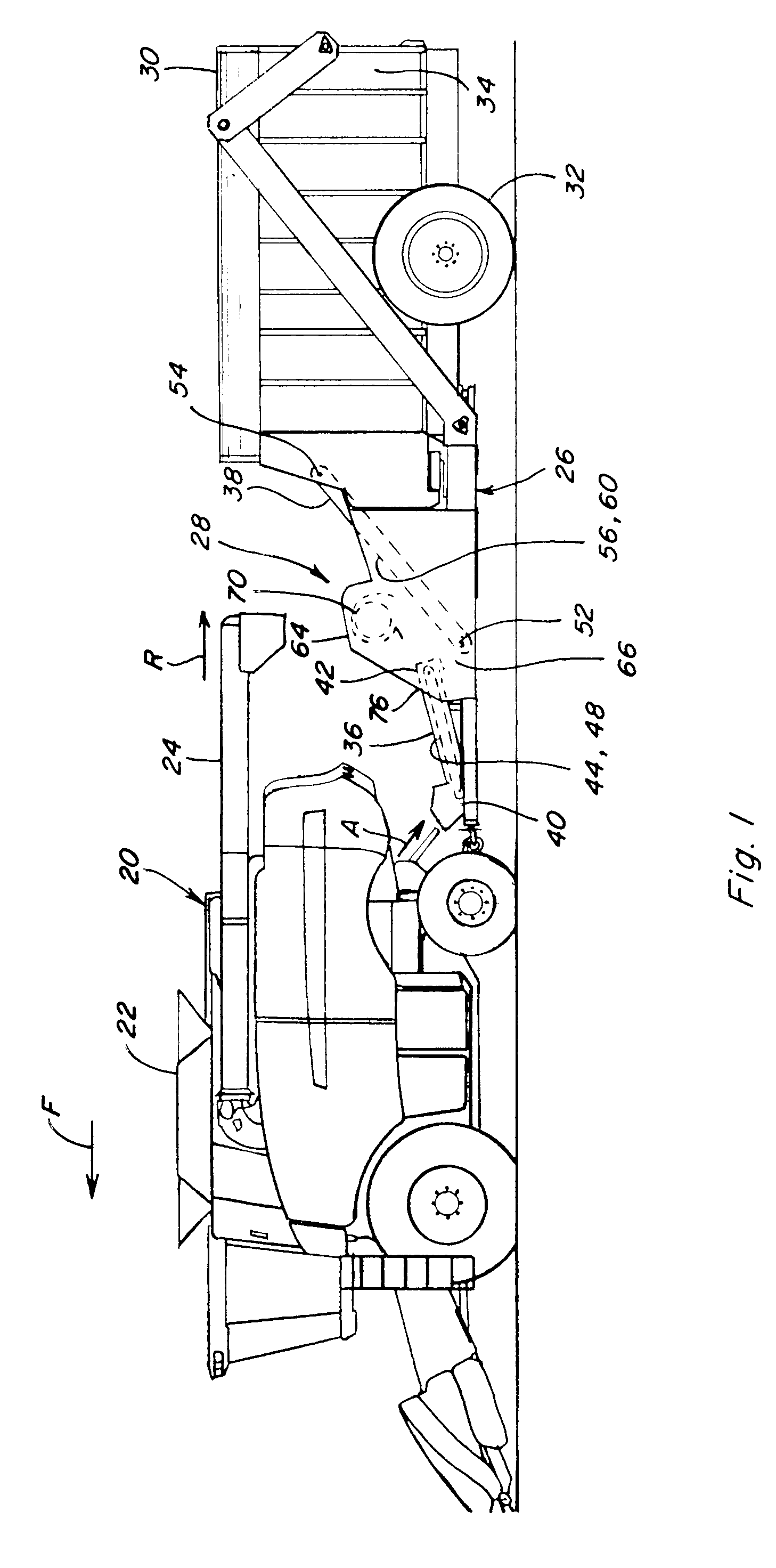Corn cob cleaning conveyor system
a conveyor system and cob technology, applied in the direction of sorting, agriculture tools and machines, solid separation, etc., can solve the problems of large amount of other residue, large amount of compensation paid, and reduced soil nutrient content of cob collection, etc., to achieve easy redirection, small momentum, and large surface area
- Summary
- Abstract
- Description
- Claims
- Application Information
AI Technical Summary
Benefits of technology
Problems solved by technology
Method used
Image
Examples
Embodiment Construction
[0038]Referring now the drawings, in FIG. 1, a representative agricultural harvesting machine 20 is shown, which is a combine constructed and operable in the well known manner for travel in a forward direction, denoted by arrow F, for harvesting whole ears of corn from corn plants as the machine travels over a field. Machine 20 includes well known apparatus (not shown) that gathers and conveys the ears of corn into a threshing system within the machine which removes most of the husk surrounding the ears, and the corn kernels from cobs of the ears, and directs a flow of the corn, cobs, or fragments thereof, and other residue or stover, within a rear chamber of machine 20 to a cleaning system thereof. At the same time, larger residue such as leaves and the like, are directed within the rear chamber to a spreader on the rear end of the machine (removed here for clarity). The cleaning system of machine 20 is operable in the conventional manner to separate the cobs and other larger eleme...
PUM
 Login to View More
Login to View More Abstract
Description
Claims
Application Information
 Login to View More
Login to View More - R&D
- Intellectual Property
- Life Sciences
- Materials
- Tech Scout
- Unparalleled Data Quality
- Higher Quality Content
- 60% Fewer Hallucinations
Browse by: Latest US Patents, China's latest patents, Technical Efficacy Thesaurus, Application Domain, Technology Topic, Popular Technical Reports.
© 2025 PatSnap. All rights reserved.Legal|Privacy policy|Modern Slavery Act Transparency Statement|Sitemap|About US| Contact US: help@patsnap.com



